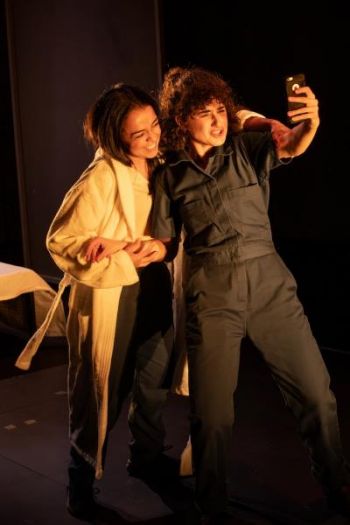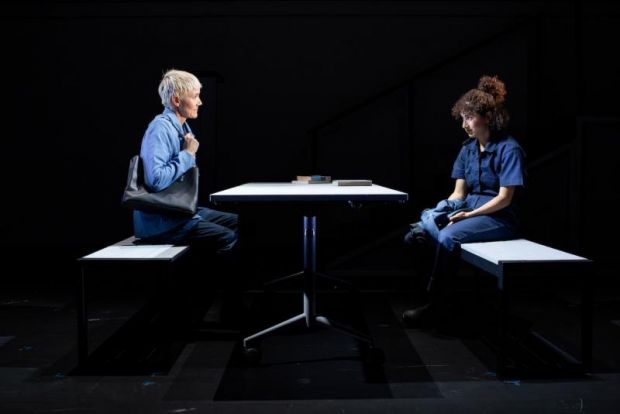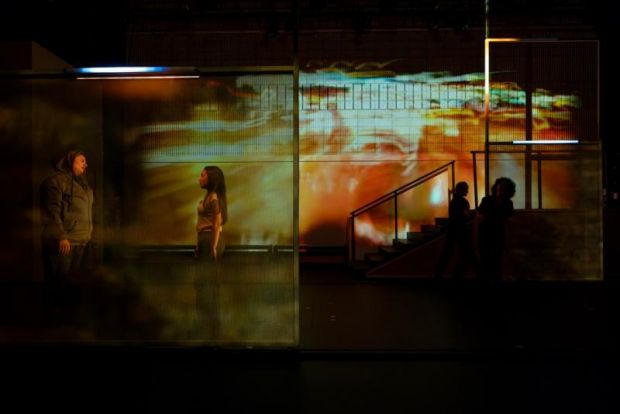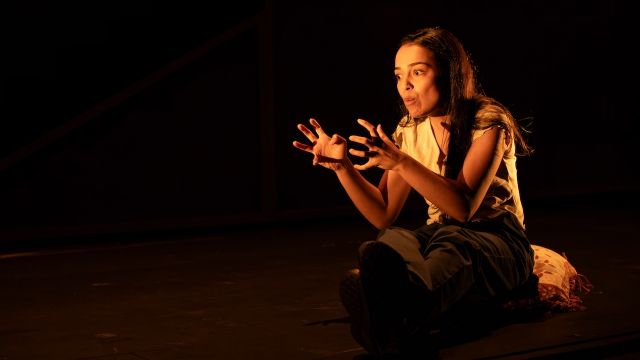Girls in Boys’ Cars
Felicity Castagna writes about aspects of life that resound with ordinary people, especially ordinary young people growing up in the suburbs, away from the rarefied atmosphere of the CBD. Her characters come from different backgrounds, different cultures, from the Australia that is busy and varied, bubbling with hopes and expectations – and the strength that comes from overcoming disillusion and disappointment.
In Girls in Boys’ Cars, Castagna take her characters Rosa and Asheeka on a road trip in the style of Sal and Dean in Jack Kerouac’s On the Road. The girls ‘borrow’ Asheeka’s boyfriend’s car and take off from Parramatta to explore New South Wales. They are young and brave – and brazen. They end up in the sorts of predicaments you might expect, but approach them with strength, determination … and grit.

Their backgrounds are different – culturally, socially, economically. Director Priscilla Jackman describes the complexity of their friendship as … “simultaneously toxic yet ferociously loyal, naïve yet ferociously courageous, co-dependent yet deeply liberating”.
In fact, like many friendships! Rosa is a reader, a thinker. Boys ignore her. Asheeka is more open, flirtatious. Her boyfriend Dan is macho, one of ‘the boys’ who hang out with them in the parking area at Maccas!
Jackman translates Castagna’s book into a play that captures the girls, the ups and downs of their journey, their excitement, and their problems. Production designer Melanie Lierty has created a set that suggests the momentum of the journey. Moveable screens, an adjustable table and stairs giving differing levels, cover changes of scene and place. Lighting designer Moran Moroney and sound designer Zac Saric add variations in mood and tone that blend with multimedia designer Mark Bolotin graphic images – huge maps, blurred photos, changing skies.

The production moves quickly, bolstered by busy cast members who move props and screens with speedy, practised choreography whilst also depicting the range of characters the girls meet along the way – and those they leave behind.
Ziggy Resnik and Nikita Waldron play Rosa and Asheeka. Their portrayals are strong and convincing, both finding the strengths of the characters, and the impact of their differences.
Resnik makes Rosa thoughtful and wistful, reticent but open to suggestion, with an energy that is tightly controlled, and comic timing that shows her sense of humour and insightfulness. The Rosa they portray wants more, but needs the confidence of someone like Asheeka to take the lead. Once ‘on the road’, Resnik shows Rosa’s growing self-assurance to make decisions (some of them wrong), and the strength to face the challenges that result.

Expressive and intuitive, Resnik shows the little changes in Rosa as she learns more about herself.
Asheeka is a little more worldly wise and Waldron shows that in Asheeka’s physicality.. Nonchalantly leaning against a post in the car park, she seems almost insolent, but still a little unsure of the effect she is having on her boyfriend Dan. She covers any lack of assurance with a tilt of her chin or a flick of her hip. Asheeka is seen as a leader, but Waldron finds her underlying anxieties. There is much baggage that Asheeka carries – her culture, parental expectations – and Waldron shows that in secret moments of despair.
Together they travel the road of self-discovery, a point that Jackman makes poignantly final scene of the play, where the girls are alone, strong enough to be making their own way to find their true self.

The characters that people their journey – and establish each pace they visit or are ‘delayed’ – are played by Suz Mawer, Ella Prince and Alex Stamell, all of whom show remarkable energy as they move from character to character and manipulate the ever-changing scenery. Whether playing parents, or boys in the carpark, or police or corrective service officers, they find just the right stance, tone and expression that makes each character immediately recognisable and real. Managing the physical demands made on them by the director – and the designer – is credit to their fitness and concentrated rehearsal.
Priscilla Jackman has stayed true to Felicity Castagna’s characters and the Parramatta that she writes about so clearly and lovingly. Rosa and Asheeka show how places like Parramatta are full of thousands of “complicated and contradictory stories” that are rich and exhilarating. Jackman’s and her creative cast and crew show how theatre can bring those complications and contradictions to the stage in a “pulsating and contemporary Australian work”.
Carol Wimmer
Photographer: Phil Erbacher
Subscribe to our E-Newsletter, buy our latest print edition or find a Performing Arts book at Book Nook.

